
9 minute read
Canned and delivered
psychologist behind 1971’s controversial Stanford Prison Experiment, in which participants were assigned roles as prisoners or guards in a mock prison, and soon fell into behaving to type.
“That experiment showed how easily good people can become those who do evil things,” he says. “But later it also got me thinking about alternatives. Why didn’t I intervene sooner to stop an experiment that had gone awry? What does it take to do the opposite – to act heroically?
“The whole program is anti-personality,” he adds. “It’s not playing to the idea that heroes are just born that way. The point is that heroism isn’t mystical. Anyone can be a hero – that if you have the awareness of someone in need and the ability to help, you will help. That opportunity doesn’t come along often, maybe once in a lifetime, maybe never, which almost by definition makes heroes exceptional people. But you can be ready for when that moment comes.”
As Langdon puts it, “courage can be cultivated”. The Heroic Imagination Project argues that, while personality type plays an uncertain part in heroism, nonetheless we can all be better primed for heroic acts through better understanding of the factors that might stop us: fear, of course, and fear of failure, even simple embarrassment; not wishing to make a stand that brings the attention of the crowd. There’s the so-called bystander effect, in which – as Autrey discovered – people are less likely to help a person in need if others are present.
There’s also the psychology of permission and authority, and the ‘fundamental attribution error’ – one reason we fail to help other people is our tendency to believe they, in some way, deserve what is happening to them. Peer group behavior is another factor: Langdon, in his work with schools, notes how less popular kids are less likely to take ‘heroic’ action out of concern for upsetting the peer group pecking order, a behavior that’s easy to correct once you understand that you’re subject to it.
Indeed, heroism is a hot topic in psychology. Recent studies suggest, counter-intuitively perhaps, that people who have accepted that they’re mortal are more likely to act heroically. A fascinating 2017 study conducted by Professor Daryl Van Tongeren of Hope College, Michigan, has found that just being exposed to superhero images – as opposed to neutral ones – was found to make people more helpful in completing a tedious task. And then there’s the role of status. Heroism is so deeply valued, a 2016 experiment found that people who were more willing to endure pain – by keeping their bare forearms dunked in ice water – were subsequently judged to be more likeable and were given a greater share of a money pot that other volunteers could divide up as they wanted.
“What’s clear is that heroism is not just being altruistic, as much as that’s needed in the world. And it’s not just about the kind of individual who rushes the bomber at the airport,” says Langdon. “We have to draw some distinction between the professional and the everyday person, but integral to heroism is there being some level of personal risk – physical or social – and acting anyway. This raises ethical questions of whether kids should be encouraged to act heroically in ways that might endanger them. We often forget we’re part of a collective that needs each other, but maybe the public isn’t ready for this yet. Society’s idea of what makes a ‘hero’ is in flux.”
Indeed, the issue is torn. On one hand, heroic acts – whether that be whistleblowing at work knowing it will cost you your career or, as we’ve seen over the past two years, quietly helping your community despite the risk of infection – are more commonplace than we imagine. Zeno Franco, associate professor at the Medical College of Wisconsin, who studies the social psychology of heroic acts, speaks of “the banality of heroism”.
“We bandy the term ‘hero’ about and tend not to apply it to people who deserve it and, in other instances, give it to people who don’t want it,” says Franco. “We’re still working out what we mean by it, but I think there’s a distinction to be made between instinctive quick action, often in a situation that demands a physical response, and the kind of long enduring action we’ve seen during Covid. I think the media – and that may be the likes of TikTok now – has an important role to play in making us aware of heroism in this broader sense, and in educating young people to act heroically if needed.”
And yet, Franco stresses, as much as we admire heroes – they populate our best literature and drive Hollywood scripts, their stories helping to shape our conception of civilization – 21st century culture may be making them a rarity. Tech atomizes us, society’s structures encourage an inward-looking individualism and Covid, some claim, has boosted an endemic ‘safetyism’ that makes us willing to give up core social goods to avoid the smallest risk.
“The idea of children being out alone for the day and nobody knowing where they are just doesn’t happen anymore, for example, yet that’s the way things were when I was a kid, and I made it home every night,” says Franco. “Heroism doesn’t thrive in a completely risk-averse culture. We have to take that idea on.”
Words Chadner Navarro Photograph Pawel Czerwinski
Canned
Hop aboard, put your feet up and relax to the sound of pssst! as you peel open a canned cocktail from your favorite bar. In bringing craft cocktails to your doorstep (or aft deck), some of the best watering holes are serving ready-to-drink artisanal beverages in a can, no matter where you are in the world.
In the world of superyachts, few things are truly out of reach. That said, getting your hands on your favorite Manhattan bar’s signature cocktail while cruising in Costa Rica is a challenge. Until now. Welcome the rise of pre-packaged drinks, courtesy of the planet’s best cocktail slingers.
When the pandemic caused bars to shutter across the globe, bartenders got creative. Some hosted demos online, others served batched beverages from takeout windows. And then there were those who brought their artful creations to you. The world of mixology is growing at a speedy clip. According to Linden Pride, founder of New York City’s Dante, which was named the world’s best bar in 2019, the expansion into consumerpackaged-goods (CPGs) is a natural extension of the craft cocktail movement. “It’s become increasingly important to make sure your brand connects with consumers in new ways,” he says. “The demand for quality canned cocktails has soared and is only continuing to rise.”
Cocktail destinations around the world are sitting up and paying attention. Here are five of FRANK’s favorite CPGs.
and delivered
Dante New York
Dante first launched its three flavored CPGs in partnership with F!ve Drinks in September 2020. It recently expanded its collection to include Spicy Fresca, a mezcal-based concoction using grapefruit soda, vanilla-saffron syrup and lime. It’s a little spicy, a little smokey and a little refreshing. “It’s our most popular drink at Dante West Village, so we’re happy it translates well in canned form,” says founder Linden Pride, who recommends drinking them “straight out of the can!”

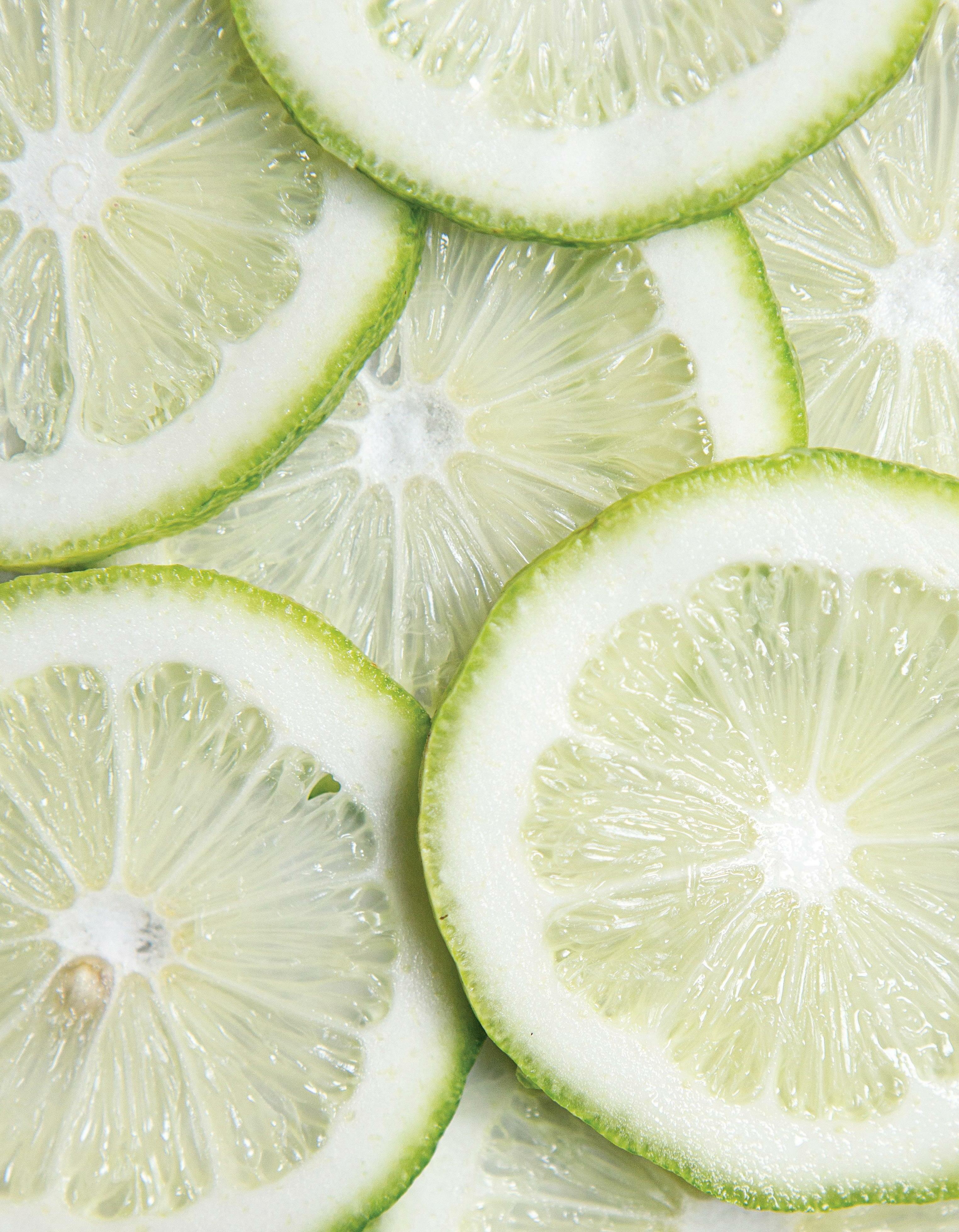
GIADA PAOLONI

Native Singapore

This innovative bar’s line of bottled drinks transports you to far-flung locales via recipes “inspired by specific cultures and cuisines,” says owner Vijay Mudaliar. The Pineapple Arrack is a fruit-forward cocktail made bolder with spices from Sri Lanka and Ceylon Arrack, a spirit distilled from the coconut flower sap. The Peranakan is cleverly modeled after kueh salat, a Malaysian aromatic custardy dessert, using jackfruit rum (mixed with pandan and candlenuts) that is fat-washed with goat milk to mimic the treat’s creaminess. “The shaking, stirring and even the types of ice available to the average home drinker can be very different,” says Mudaliar, who tinkered with the formulas to make them as close to barperfect as possible. “These are drinks that are just as tasty poured over ice in your old coffee mug as they are on Raffles’ rooftop.”

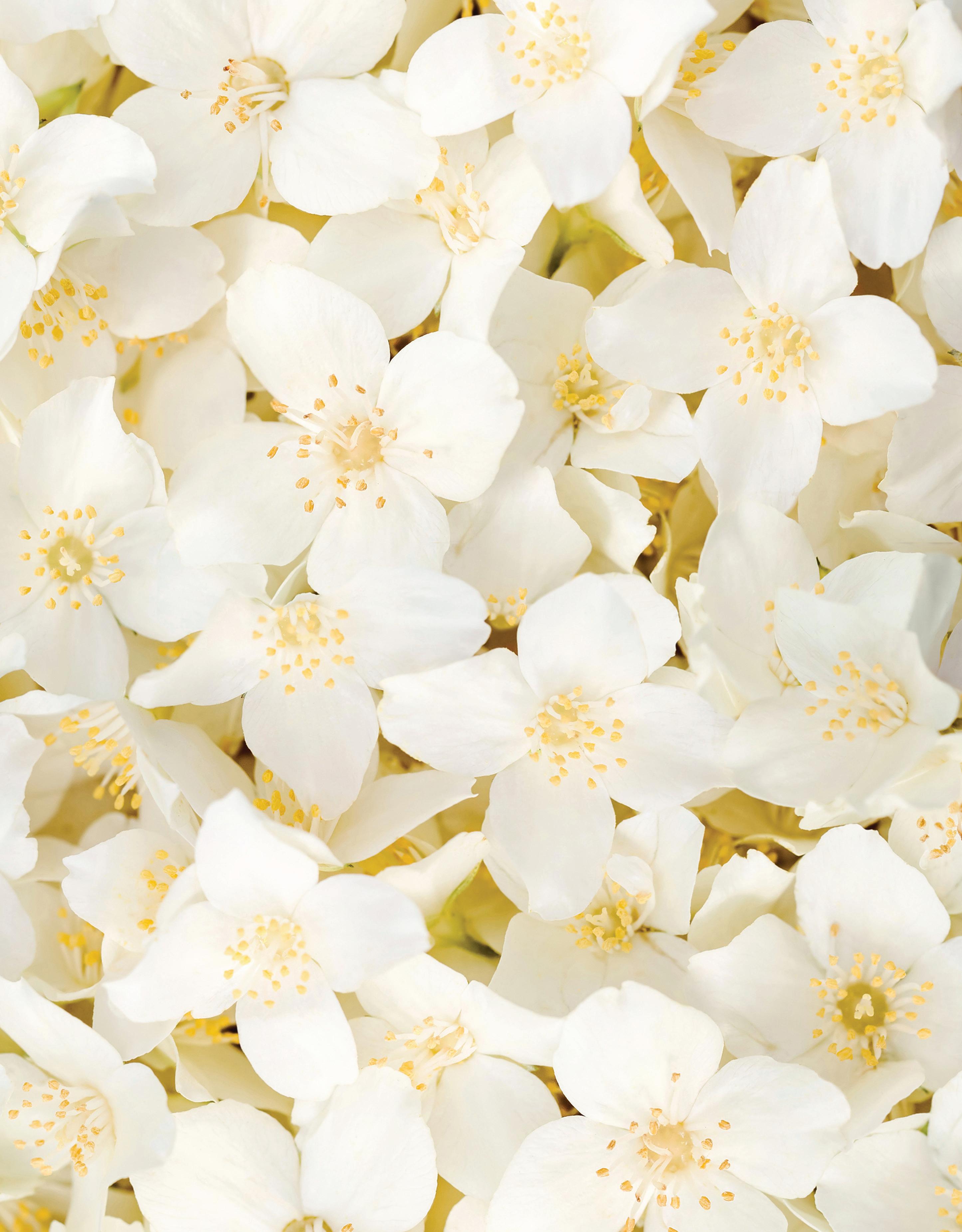
Maybe Sammy Sydney
Already ranked high among the world’s best bars, this stylish Sydney watering hole has released seven elegantly packaged cocktails to further expand its reach. The locavore approach behind the bar has been adopted for its on-thego beverages, but co-founder Martin Hudak says they focus on classics with a Maybe Sammy twist. The Jasmine Negroni is elevated with Australian botanicals and a house-made white jasmine tea dilution. “It’s perfect for afternoons in the sun,” says Hudak, who adds that the growth of bottled cocktails could potentially match wine for consumption on special occasions.
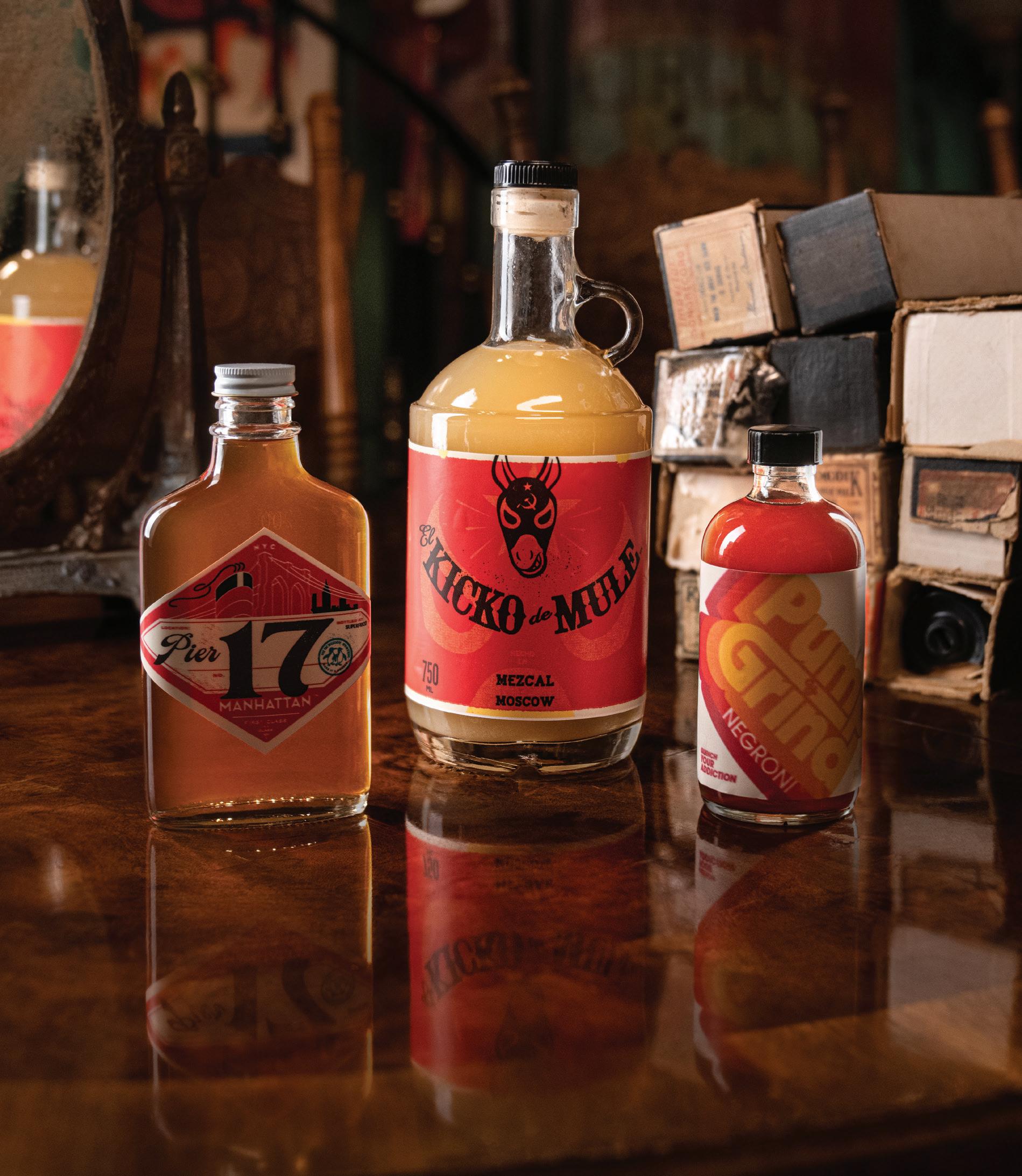
JUSTUS MENKE JUSTUS MENKE, SPIEGELWORLD
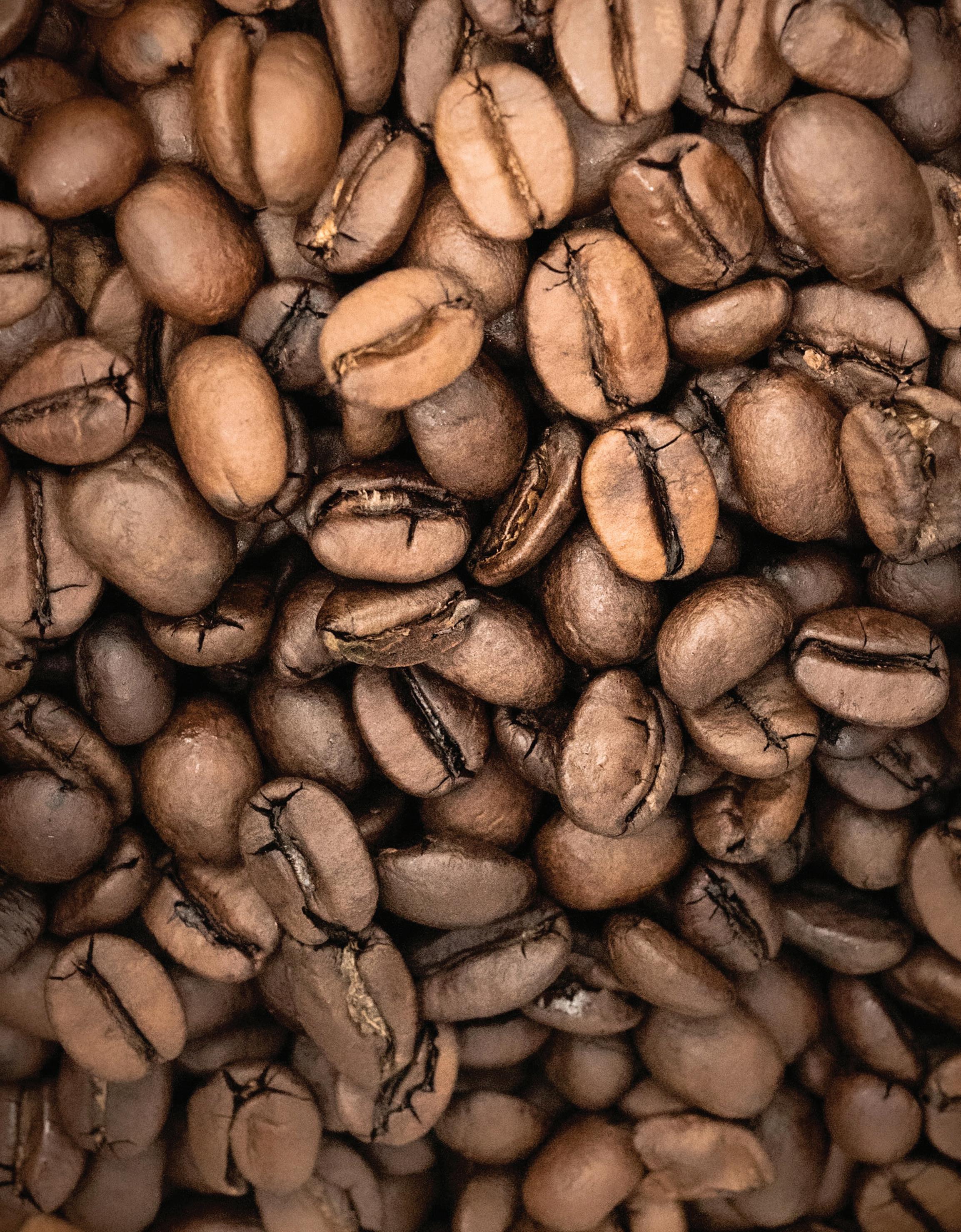
Superfrico Las Vegas
Legendary bartender Leo Robitschek’s (of Eleven Madison Park and NoMad) hotspot opened inside The Cosmopolitan in September 2021, and did so ready to jump on the CPG movement with Bottle-O, a line of eight bottled cocktails. According to Robitschek, the process hinged on countless taste tests to ensure recipes come with a long-lasting shelf life. There’s a potent coffee-spiked, tequila-based take on the negroni as well as something called Might I Have Another?, which mixes a blend of different rums with lime, orgeat and velvet falernum. Pro tip from Robitschek: “All of our canned cocktails are ready to drink, but I would recommend giving it a shake before pouring over ice. And, with any of the cocktails that contain citrus, it’s nice to put it in a shaker to aerate and reactivate the drink.”
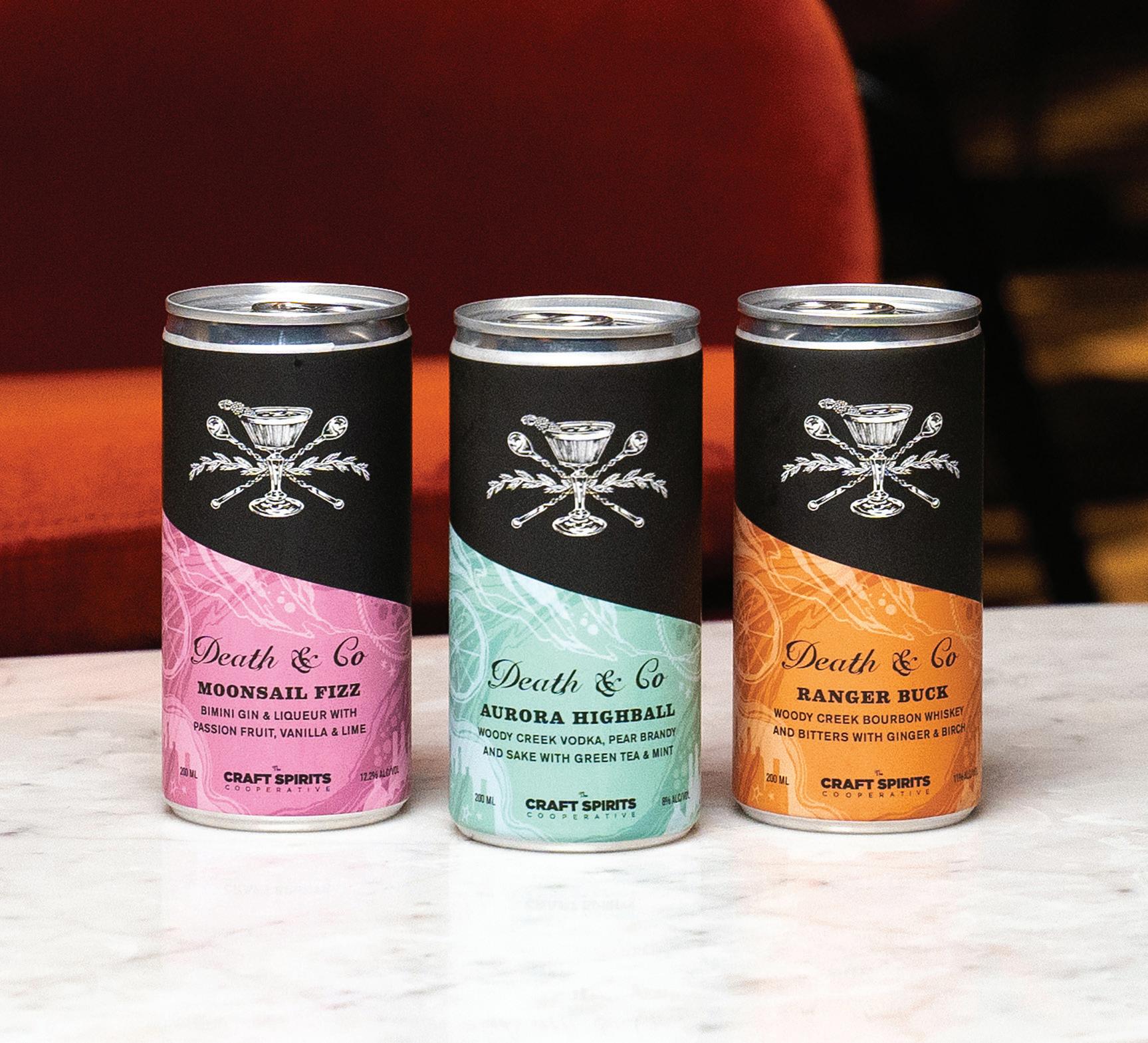
Death & Co East Village

An iconic New York City bar that has since expanded with operations in Los Angeles and Denver, Death & Co launched three canned cocktails in November 2021 in collaboration with The Craft Spirits Cooperative. All three are signature drinks that devoted customers have enjoyed for years. “The opportunity to bring our cocktails to folks who aren’t able to visit our bars is a really exciting prospect for us,” says Devon Tarby, co-owner of Death & Co. The Moonsail Fizz, which mixes gin and red bitter liqueur with passion fruit, vanilla syrup and lime is especially holiday-ready. “Consider it your escape without the plane ticket,” adds Tarby.
GLEN CARRIE










